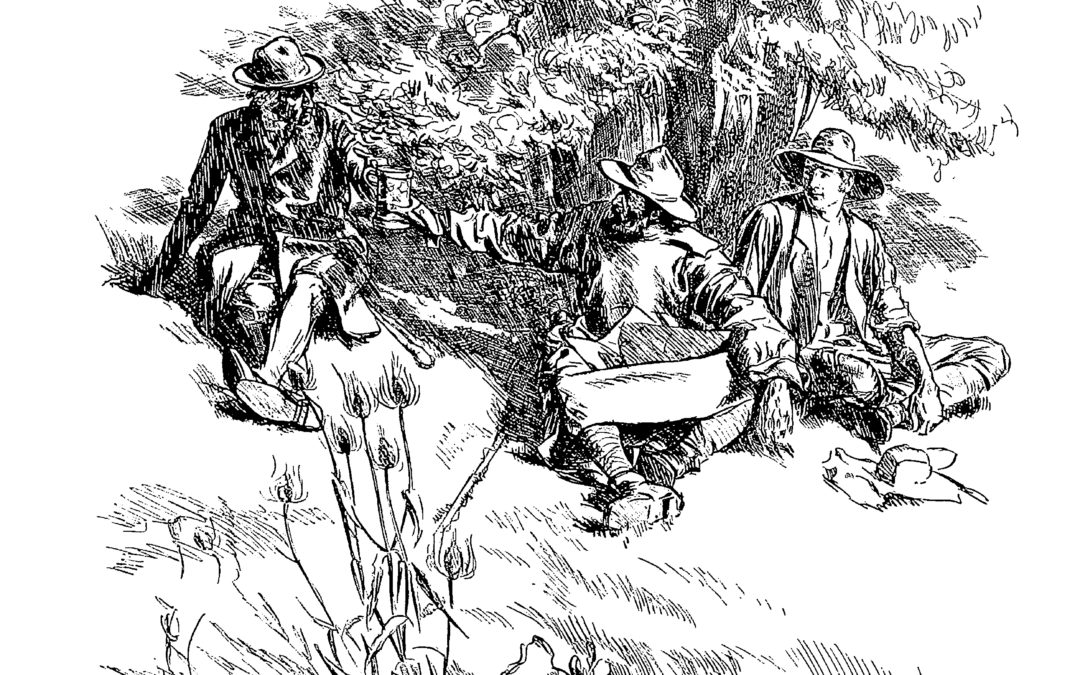Hawthorne’s The Blithedale Romance is the story of Blithedale. On this communal farm, Mile Coverdale and Charles Hollingsworth vie for Priscilla’s affection, an ethereal waif as she seems to float rather than walk on the ground.
One of Frederick Townsend’s illustrations shows Coverdale and Hollingsworth taking time out for lunch. Townsend likely selected this episode because it alludes to Pieter Bruegel, the Elder’s The Harvesters (1565) or William Sidney Mount’s Farmers Nooning (1851). Often a farmer’s lunch is called “Nooning.” Still, Hawthorne suggests it’s an “elevenses”: “Hollingsworth and I,” Coverdale explains, “had been hoeing potatoes that forenoon while the rest of the fraternity were engaged in a distant quarter of the farm—sat under a clump of maples, eating our eleven o’clock lunch, when we saw a stranger approaching along the edge of the field.”
Hollingsworth greets the man, Moody, as an acquaintance but unknown to Coverdale; he is Priscilla’s father.
Graciously, Hollingsworth and Coverdale share their lunch with Moody. Townsend uses a portion of Hawthorne’s description for his caption, “We handed him such food as we had, together with a brown jug of molasses and water (would that it had been brandy, or some thing better, for the sake of his chill old heart!), like priests offering dainty sacrifice to an enshrined and invisible idol.”
Featured Image: Frederick Henry Townsend. “Like priests offering dainty sacrifice,” In Nathaniel Hawthorne. The Blithedale Romance (1852). London: Service and Paton, 1899. Moody, whose face is obscured, sits beside Hollingsworth and Coverdale, who have been hoeing potatoes.
See Nathaniel Hawthorne. The Blithedale Romance. Boston: James T. Fields, 1852. There is a masquerade picnic at Blithedale that Townsend illustrates, which is posted elsewhere.

